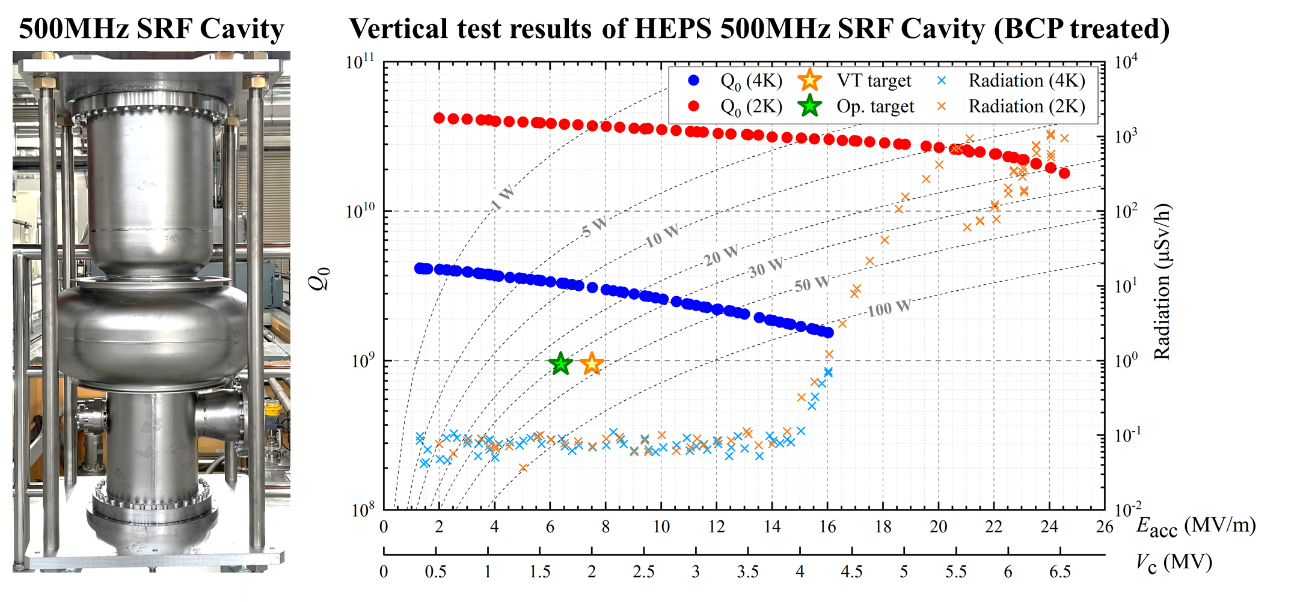At 4.2 K, the unloaded quality factors (Q0) of both cavities were measured at various accelerating voltages. For the 166 MHz cavity, Q0 was greater than 3.8E+9 at the design voltage of 1.5 MV; for the 500 MHz cavity, Q0 was greater than 3.0E+9 at the design voltage of 2.0 MV. Both cavities were processed by buffered chemical polishing (BCP) and the results surpassed HEPS specifications.
The 166 MHz cavity is the world’s first quarter-wave SRF structure to accelerate relativistic particles (beta=1) as a main accelerating cavity and has challenges including complex cavity geometry, relatively low frequencies for the higher order modes, and high input RF power. Following the success of the 166 MHz proof-of-principle cavity previously developed for HEPS-TF during 2017–2019, the current cavity adopted an enlarged beam pipe design to realize a heavy damping of higher order modes in order to fulfill the stringent impedance requirements for the HEPS storage ring. The RF and mechanical parameters were optimized during the design while a compact cavity geometry was preserved. Working with the engineering staff from HE-Racing Technology Co., a series of technical obstacles were overcome in the manufacturing and welding of large complex parts. Finally, the unwanted streaks on the cavity’s inner surface caused by BCP due to complex geometry were elegantly removed, thus greatly improving the surface quality.
Largely based on BEPCII’s successfully developed spare cavity, the 500 MHz cavity was further optimized to fulfill HEPS requirements. Working together with HE-Racing, the difficulties of deep drawing and electron-beam welding for large elliptical cavities were nicely solved in the fabrication process. Concerning the surface treatment, an optimized BCP system was developed after careful simulations and multiple experiments as a result of a joint effort between IHEP and Ningxia Orient Superconductor Technology Co., thus improving cavity surface quality.
The 166 MHz and 500 MHz superconducting cavities were fabricated by HE-Racing Technology Co., Ltd., while the design, post-processing and vertical tests of these cavities were conducted by physicists and engineers from the HEPS RF work package.
Vertical test results of HEPS 166MHz SRF Cavity (BCP treated)
Vertical test results of HEPS 500MHz SRF Cavity (BCP treated)
Source: http://english.ihep.cas.cn/nw/han/y22/202206/t20220616_306587.html


